Paediatrics > QUESTIONS & ANSWERS > EXAM 1: Pediatrics Practice Questions and Answers Already Passed (All)
EXAM 1: Pediatrics Practice Questions and Answers Already Passed
Document Content and Description Below
EXAM 1: Pediatrics Practice Questions and Answers Already Passed A nurse is conducting an admission interview with the mother of a 2 year old child. What history question is most important at this ... time? a. How many children are in the family? b. What is your child's normal routine? c. Does your child attend daycare? d. What toys are most important to your child? ✔✔b. What is your child's normal routine? A 9 month old is sitting on his father's lap at the bedside. The nurse needs to do a shift assessment. How should the nurse proceed? a. Ask the father to put the child in bed, and proceed with the exam. b. Talk with the father for a few minutes, before examining child. c. Listen to the heart and lungs of the child. d. Take the child from the father, and proceed with the exam. ✔✔b. Talk with the father for a few minutes, before examining child. Which nursing intervention best supports the concept of atraumatic care for a hospitalized child? a. Allowing parents to visit once every shift. b. Encouraging six year old to be brave during an IV start. c. Allowing adolescent to keep the hospital door shut. d. Asking parents of baby to wait outside treatment room door during spinal tap. ✔✔c. Allowing adolescent to keep the hospital door shut. A six year old is in the recovery room following an appendectomy. He is not yet fully awake, though he opens his eyes when his name is called. Which pain assessment tool would be most effective for the nurse to use at this time? a. OUCHER assessment tool. b. Wong's FACES assessment tool. c. FLAACC pain assessment tool. d. 1-10 verbal assessment scale. ✔✔c. FLAACC pain assessment tool. A nurse enters the room of an 8-year-old child newly admitted and diagnosed with type I diabetes. His mother is sitting in a chair at his bedside. What should the nurse do first? a. Go the bedside and meet the child. b. Stand by the door, and say "I am the assigned nurse today." c. Go over to the mother and ask what brought the child into the hospital today. d. Explain the use of the call light to child. ✔✔a. Go the bedside and meet the child. Which hospitalized child would the nurse be most worried about as needing support or follow-up? a. The 9-month-old that cries when the nurse walks in the room. b. The 2-year-old that holds still during an IV start. c. An adolescent that asks her father to leave the room during an assessment. d. A school-age child that angrily throws his food tray on the floor. ✔✔b. The 2-year-old that holds still during an IV start. What nursing intervention would be most appropriate for a 10-year-old child with type I diabetes in order to meet their needs (as described by Erikson). a. Explain carefully to the mother the need to rigidly adhere to dietary modifications. b. Allow the child to eat whatever he or she wants and administer insulin to maintain optimum glucose levels. c. Allow the child to perform his or her own Accuchecks and administration of insulin. d. Perform Accuchecks four times a day and at bedtime. ✔✔c. Allow the child to perform his or her own Accuchecks and administration of insulin. A 16 year old female comes for a sport's physical in the clinic. During the nursing history, the teenage states she is bothered that she "towers over her companions and everyone is staring at her at school." What would be the most therapeutic response by the nurse? a. "Just ignore the other kids at school." b. "You are so lucky to be tall. You can play basketball or whatever you want." c. "This will resolve itself in time." d. "Tell me more about how this embarasses you." ✔✔d. "Tell me more about how this embarasses you." The maternity nurse is providing instructions to a new mother regarding the psychosocial development of the newborn infant. Using Erikson's psychosocial development theory, the nurse instructs the mother to take which measure? A. Allow the newborn infant to signal a need. B. Anticipate all the needs of the newborn infant. C. Attend to the newborn infant immediately when crying. D. Avoid the newborn infant during the first 10 minutes of crying. ✔✔A. Allow the newborn infant to signal a need. Rationale: According to Erikson, the caregiver should not try to anticipate the newborn infant's needs at all times but must allow the newborn infant to signal needs. If a newborn infant is not allowed to signal a need, the newborn will not learn how to control the environment. Erikson believed that a delayed or prolonged response to a newborn infant's signal would inhibit the development of trust and lead to mistrust of others. The mother of an 8-year-old child tells the clinic nurse that she is concerned about the child because the child seems to be more attentive to friends than anything else. Using Erikson's psychosocial development theory, the nurse should make which response? A. "You need to be concerned." B. "You need to monitor the child's behavior closely." C. "At this age, the child is developing his own personality." D. "You need to provide more praise to the child to stop this behavior." ✔✔C. "At this age, the child is developing his own personality." Rationale: According to Erikson, during school-age years (6 to 12 years of age), the child begins to move toward peers and friends and away from the parents for support. The child also begins to develop special interests that reflect his or her own developing personality instead of the parents. Therefore options 1, 2, and 4 are incorrect responses. A parent of a 3-year-old tells a clinic nurse that the child is rebelling constantly and having temper tantrums. Using Erikson's psychosocial development theory, which instructions should the nurse provide to the parent? SELECT ALL THAT APPLY A. Set limits on the child's behavior. B. Ignore the child when this behavior occurs. C. Allow the behavior, because this is normal at this age period. D. Provide a simple explanation of why the behavior is unacceptable. E. Punish the child every time the child says "no" to change the behavior. ✔✔A. Set limits on the child's behavior. D. Provide a simple explanation of [Show More]
Last updated: 1 year ago
Preview 1 out of 24 pages
.png)
Reviews( 0 )
Document information
Connected school, study & course
About the document
Uploaded On
Oct 02, 2022
Number of pages
24
Written in
Additional information
This document has been written for:
Uploaded
Oct 02, 2022
Downloads
0
Views
98

.png)
.png)
.png)
.png)
.png)
.png)
.png)
.png)
.png)
.png)
.png)

.png)
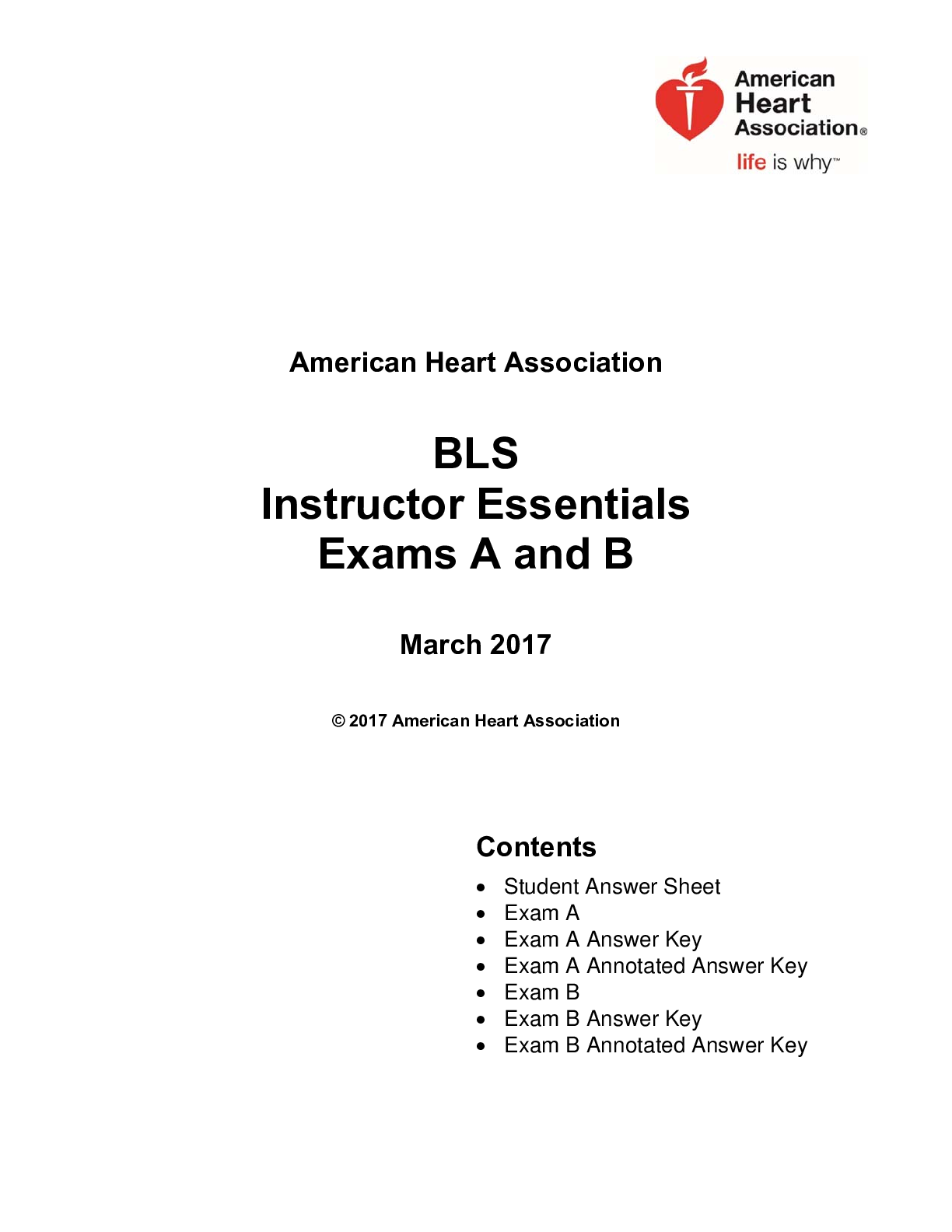
.png)
.png)
.png)


.png)
.png)
.png)
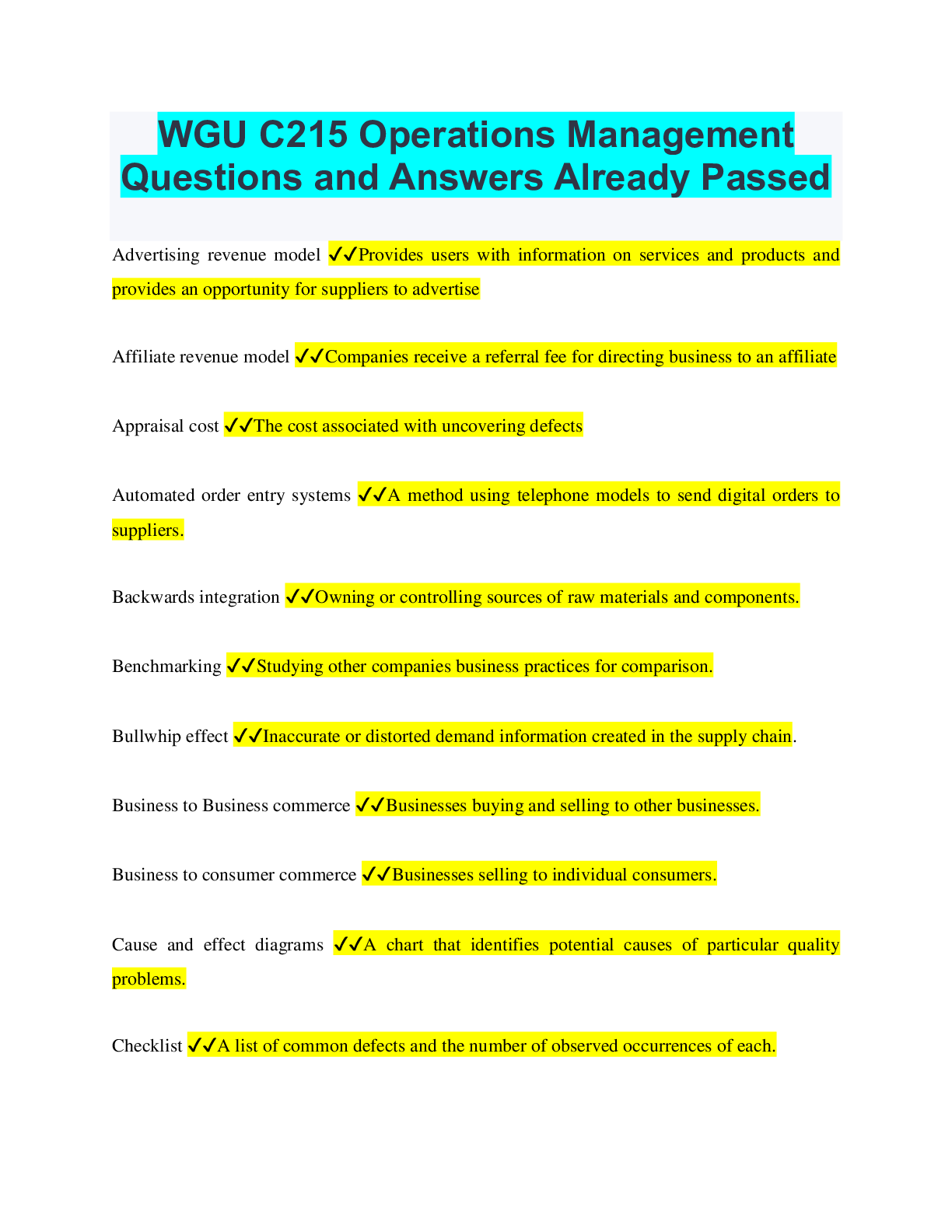
.png)
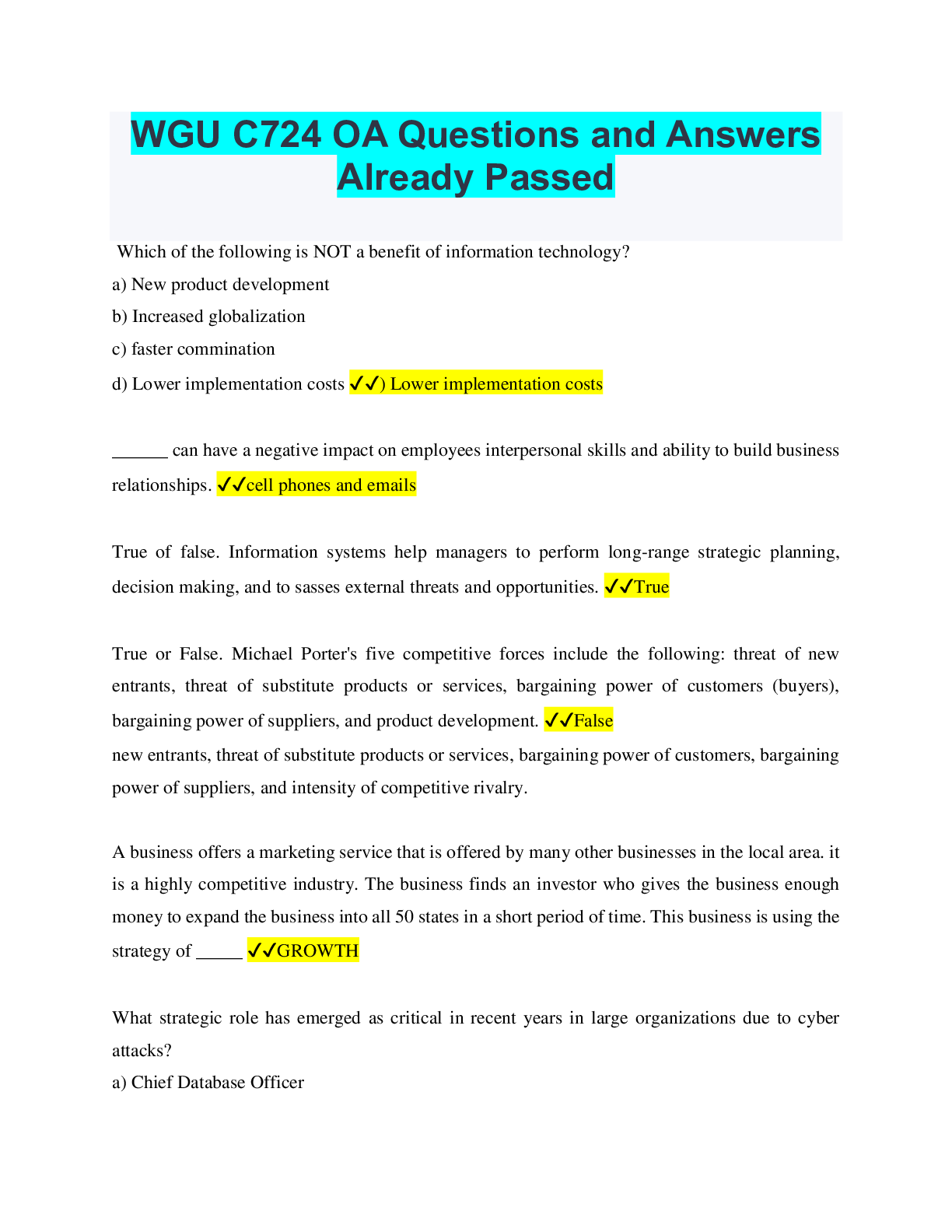
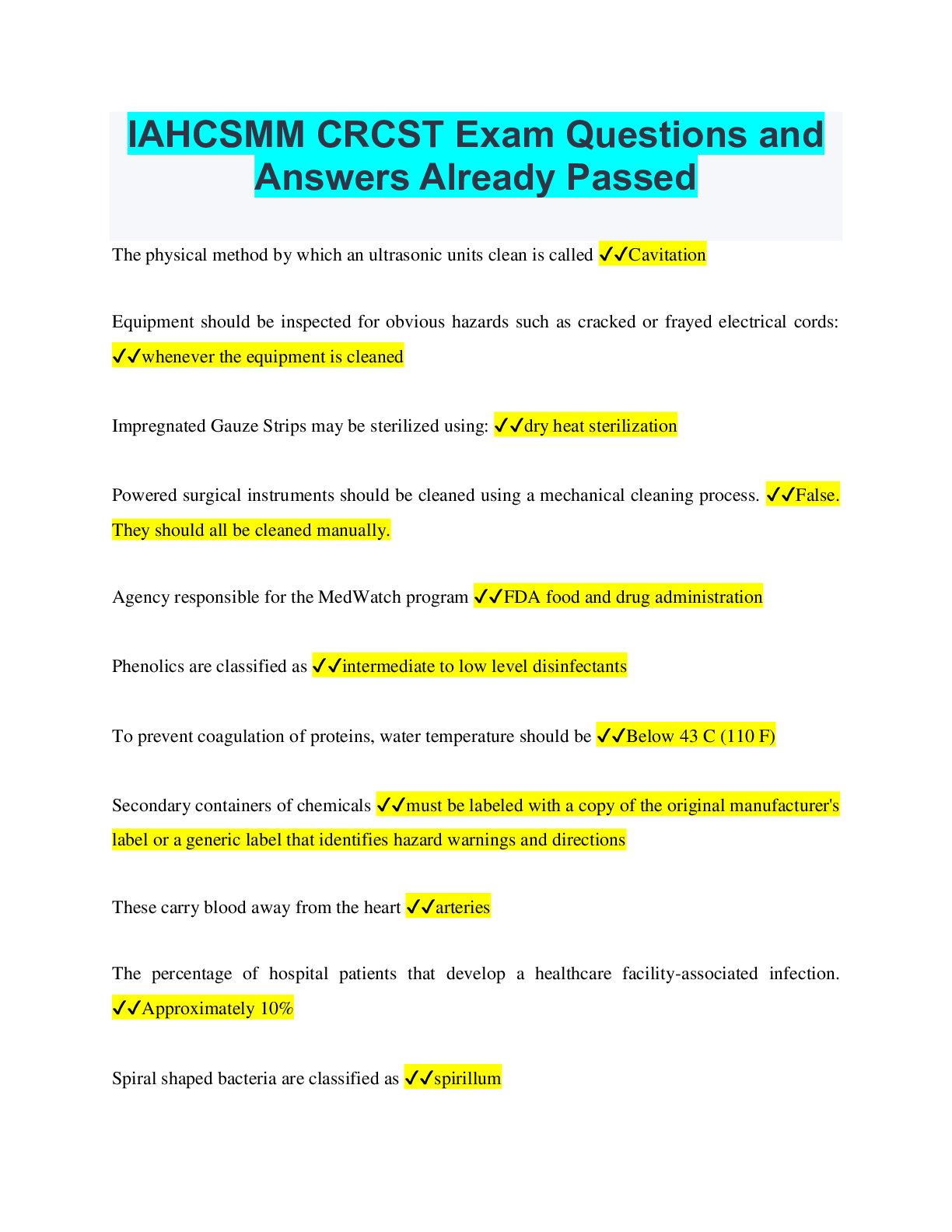
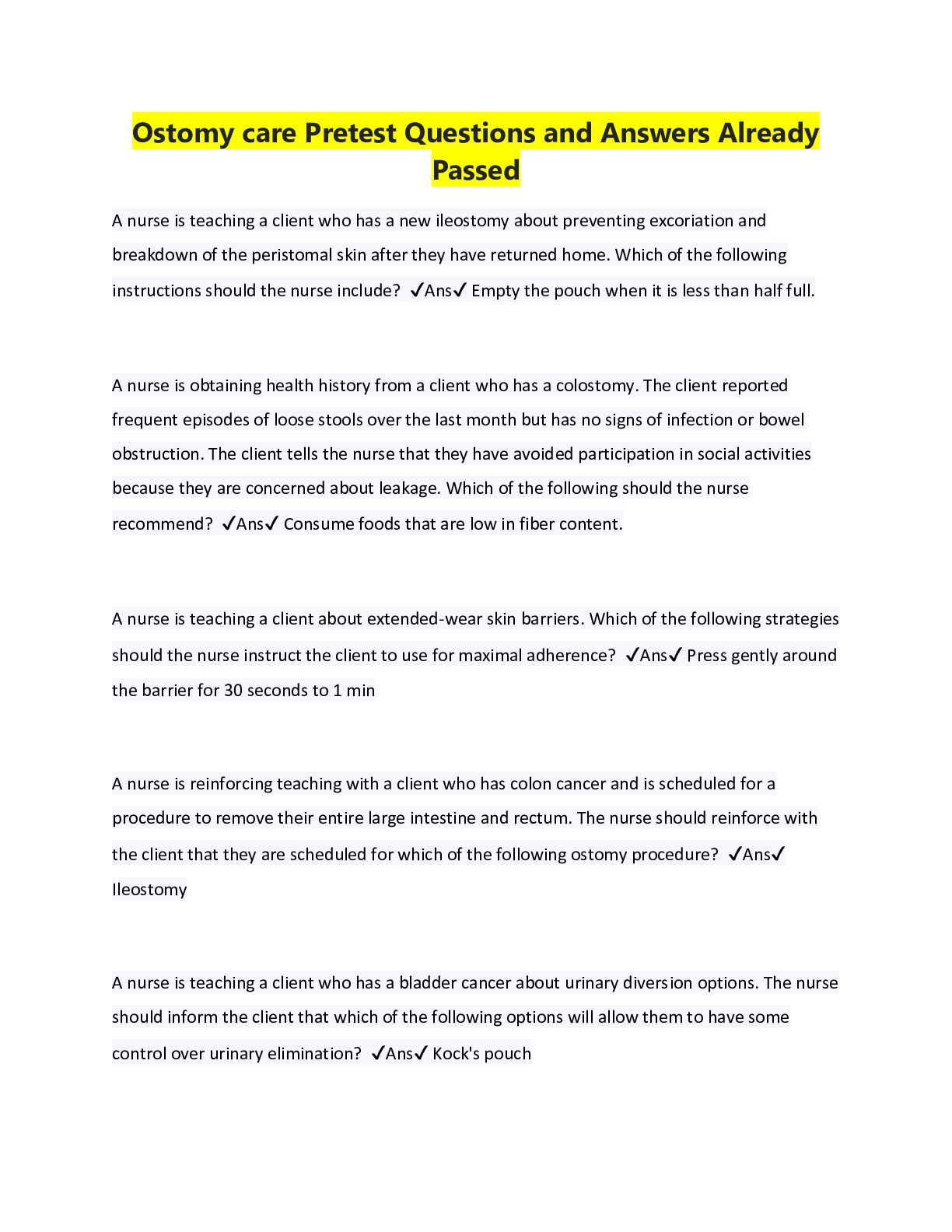
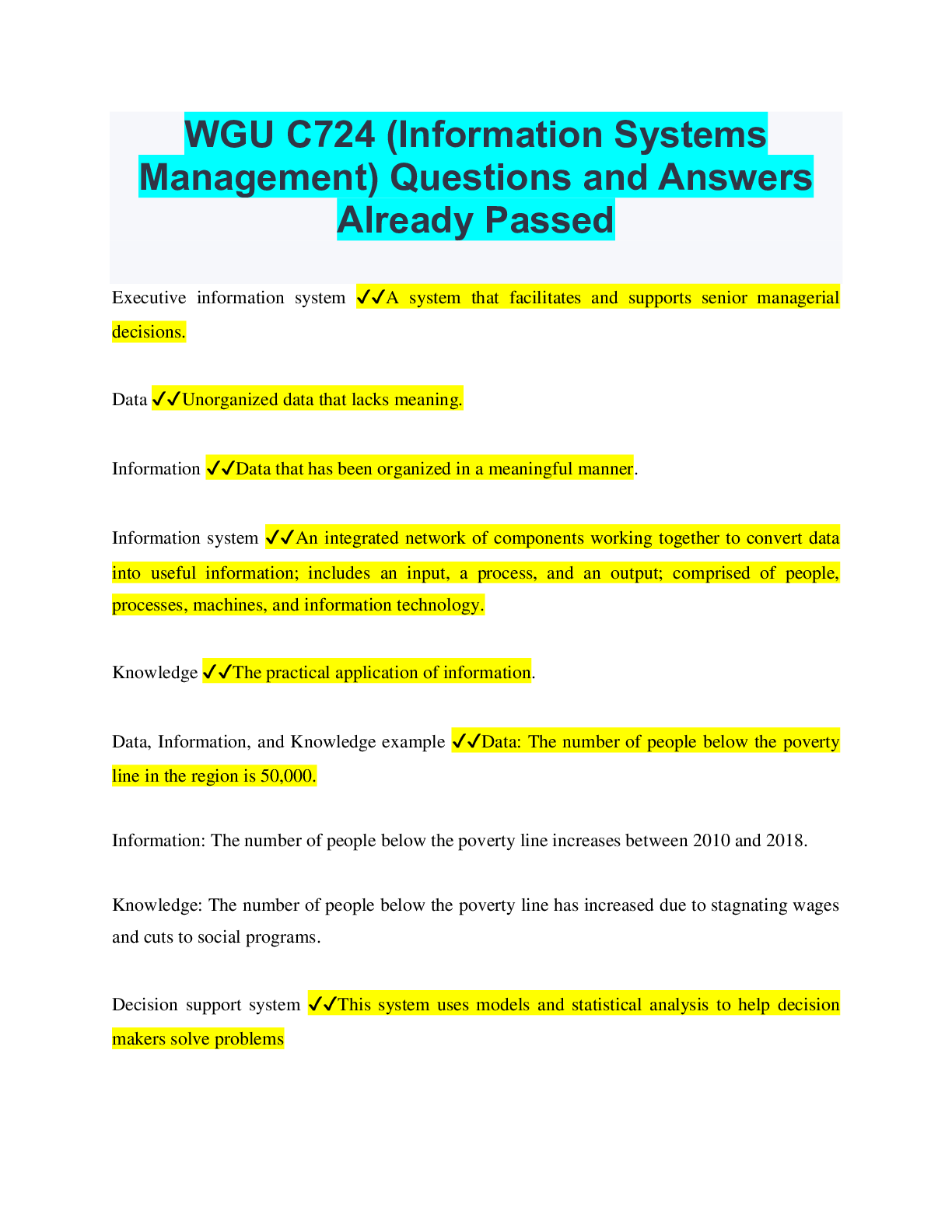
.png)
.png)
.png)
.png)
.png)

